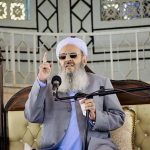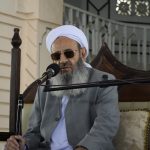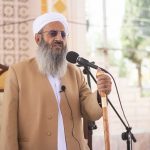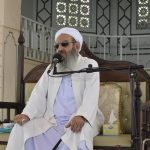 Sistan سیستان in Farsi, is well known in the historical books by “Sajistan”; it was the name of a huge territory of old Persia. But now it is a small part of historical Sajistan; it extended from Sabzewar, northern Iran to Sindh. Kerman and some regions of today’s Afghanistan also were parts of Sistan. This fertile region provided many prominent scholars to the Islamic world such as Abu Hatam Sajistani (Arabic liberator), the famous Muhaddith Abu Dawoud Sajistani and Muhammad bin Keram.
Sistan سیستان in Farsi, is well known in the historical books by “Sajistan”; it was the name of a huge territory of old Persia. But now it is a small part of historical Sajistan; it extended from Sabzewar, northern Iran to Sindh. Kerman and some regions of today’s Afghanistan also were parts of Sistan. This fertile region provided many prominent scholars to the Islamic world such as Abu Hatam Sajistani (Arabic liberator), the famous Muhaddith Abu Dawoud Sajistani and Muhammad bin Keram.
Sistan is located in south-east of Iran and north of Balochistan. Its border joins “Nimrouz” and “Farah” provinces of Afghanistan. “Sistan & Balochistan” two historical territories have been being counted the provinces of Iran for a long time. The area of Sistan is about 15,197 square meters. The population of Sistan is more than 500,000. According the non-official census about one part of population which belongs to the Sunni community. Despite this, existence of Sunnis in Sistan is “strange” and seems to be unbearable for other sects and races! Why? You will find your answer later on.
In the era of the second caliph Omar bin Khattab (may Allah be pleased with him) at 23rd of Hijra (644 A.D), Muslim army conquered many regions of Persia including “Sistan”. Since that time Sunni community has been living in this territory.
Due to being to far from Arab Peninsula and the Amawiya caliphs’ the capital Sistan remained a safe heaven for the opponents of Amawiya caliphs, but the voice of local chiefs against Arab Muslim rulers and the central government had been heard. Sistani elders rebelled many times just because of ethnic differences. Some leaders of the biggest anti government movement “Sho’ubiya” like Taher bin Hussain, Ammar Khareji and Hamzah bin Azarak were from Sistan; thus in the two first centuries Sistan was not a safe place for Sunnis and they faced many kind difficulties at that era.
Sunnis of Sistan in past and present
Sistan became a real avernus for Sunni Muslims following the assault of Safavid on all areas of Iran in order to massacre Muslims and “purge” Iran from Sunnis. In this regard Safavid troops attacked Sistan and Balochistan to occupy these regions and change the religion (madhab) of people. Although Safavid could not suppress Sunni Balochs of Balochistan but they damaged Sunnis of Sistan badly. Still the Sunni community of Sistan has been suffering from various types of discrimination attitude, pressure and unjustifiable manners. Sistan’s Sunnis race (Baloch) and madhab (Ahl-us-Sunna) are two main reasons of their deprivation. Ever the Sunnis of Iran in other provinces are unaware regarding to the condition and news of Sistan’s Sunnis.
Sunnis of Sistan speak Balochi; Shia residents’ language is Zaboli, (a branch and accent of Persian). The Sunnis mostly live in villages; they are poor and their income source is doing agriculture and breeding livestock. Sunnis have gotten the majority of “Hirmand” and “Zahak” cities of Sistan as recently they have been decelerated cities by the government after being big towns in their past. The central city of Sistan is Zabol in which Sunnis include 20 percent of the population.
Contrariwise to Balochistan, here people had been involved in innovation and superstitions. However about twenty years ago a famous Sunni seminary was found in Islamabad village of southern Sistan. The foundation of “Darululoom Muhammadiya” was a cornerstone of an academic and cultural revolution in Sistan. This seminary became an oriented and prominent institute of the country very soon as well as root cause of religious awareness among the masses and eradication of innovation from Sistan. Several religious schools and mosques have been established and actively serve Muslims. Sunnis offer Friday and Eid prayers in five main areas of Sistan; (Zabol, Zahak, Hirman, Kohak and Islamabad). Imam and preacher of Zabol is Shaikh Abd-ur-Rasheed Shahbakhsh.
It is notable that “Darululoom Muhammadiya” was occupied by some government-backed elements at the end of 2007. As students and their teachers compelled to encamp in “Adheemabad”. Unfortunately their seminary in Adheemabad was demolished completely in 2008 by the Iranian authorities.
The Sunnis of Sistan have been suffering the economical crises due to long-time starvation and the state discrimination deprived them from jobs and posts. A part of such crises here Sunnis have no adequate mosques and seminaries. The authorities must not prevent Sunnis from building mosques and establishing religious schools. Especially the government should permit Sunnis to re-establish Darululoom Imam Abu Hanifa (Rahimahullah) in Adheemabad. These institutes would provide opportunity for the new generation to progress in academic, cultural and spiritual fields.
We hope almighty Allah to gift Muslims in Sistan a more bright future than its brilliant past.
SunniOnline.us









Comments